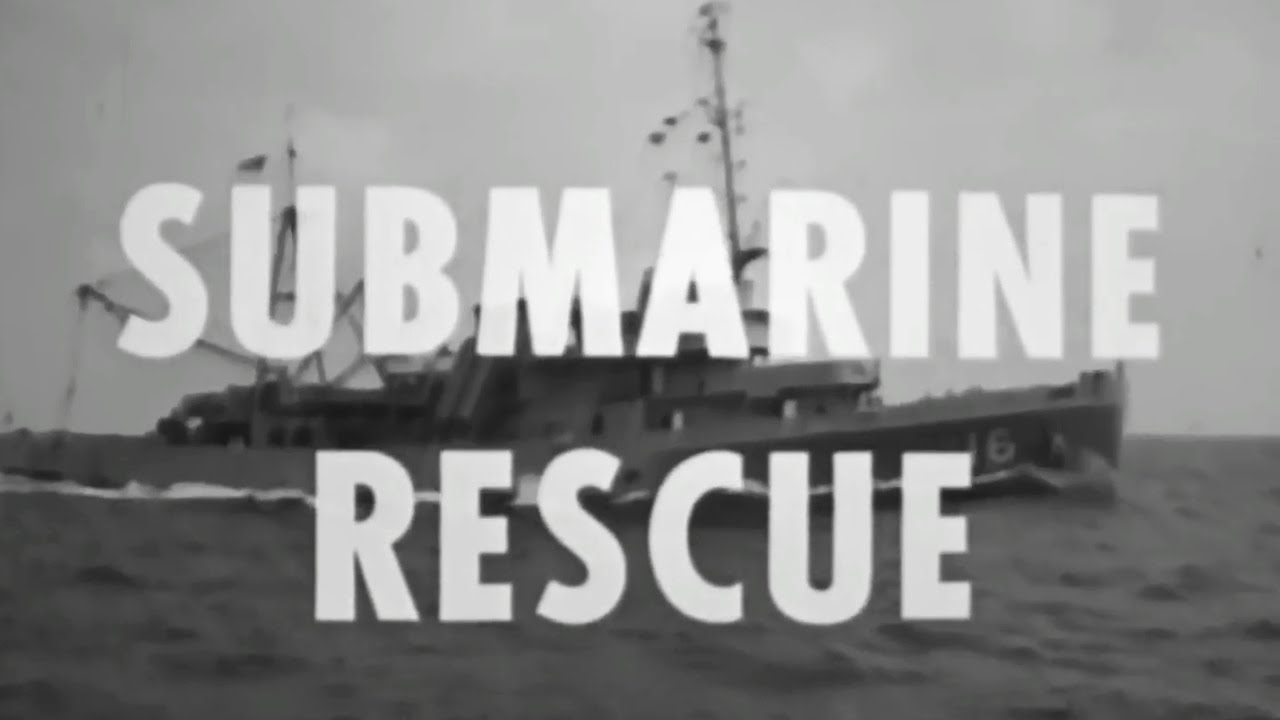Submarines & Diving playlist:
US Navy Training Film playlist:
more at
“This 1970 U.S. Navy training film shows the procedure used to rescue the crew of a submarine stranded at the bottom of the ocean. Footage of the Submarine Rescue Ship USS TRINGA (ASR 16) is used in the film. Source: Naval History and Heritage Command, Photographic Section…”
US Navy Training Film MN-10541B
Reupload of a previously uploaded film with improved video & sound.
Public domain film from the US Navy, slightly cropped to remove uneven edges, with the aspect ratio corrected, and one-pass brightness-contrast-color correction & mild video noise reduction applied. Bad color on this film was beyond correction, so it was removed, leaving the film black and white.
The soundtrack was also processed with volume normalization, noise reduction, clipping reduction, and/or equalization (the resulting sound, though not perfect, is far less noisy than the original).
USS Tringa (ASR-16) was a Chanticleer-class submarine rescue ship of the United States Navy. She was laid down on 12 July 1945 at Savannah, Georgia, by the Savannah Machine & Foundry Co.; launched on 25 June 1946; sponsored by Mrs. Nola Dora Vassar, the mother of Curtis L. Vassar, Jr., missing in action; and commissioned on 28 January 1947, Lt. Comdr. Paul C. Cottrell in command…
Tringa completed overhaul early in March 1970. During refresher training, she received orders reassigning her to Submarine Division 121 based at Key West, Florida…
Over the next five years, Tringa alternated tours of duty in the Mediterranean with service along the east coast of the United States…
In June 1973, Tringa rushed to the rescue when Johnson Sea Link accident disaster struck a civilian deep-submergence vehicle test project. On the 17th, she received orders to go to the aid of Dr. Edwin Link, whose submersible, the Johnson Sea Link, was reported “in distress, bottomed in approximately 360 feet of water with four men on board.” …Though Tringa divers tried to revive the two men in the after chamber of the submersible by warming it with HeO and hot water, the two men were pronounced dead at 0800 on 20 June. The two men in the forward chamber survived…
Mystic class is a class of Deep Submergence Rescue Vehicles (DSRVs), designed for rescue operations on submerged, disabled submarines of the U.S. Navy or foreign navies. The two subs of the class had never been used for this purpose, and were replaced by the Submarine Rescue Diving Recompression System…
Features
DSRVs are designed for quick deployment in the event of a submarine accident. DSRVs are transportable by truck, aircraft, ship, or by specially configured attack submarine. At the accident site, the DSRV works with either a “mother” ship or “mother” submarine. The DSRV dives, conducts a sonar search, and attaches to the disabled submarine’s hatch. DSRVs can embark up to 24 personnel for transfer to the “mother” vessel.
The DSRV also has an arm to clear hatches on a disabled submarine and a combined gripper and cable cutter. The gripper is able to lift 1,000 pounds (450 kg)…
The Deep Submergence System Project was established in June 1965 in the aftermath of the loss of USS Thresher in 1963…
The Submarine Rescue Diving Recompression System (SRDRS) is a remotely operated underwater vehicle and its associated systems intended to replace the Mystic class deep submergence rescue vehicle for the United States Navy. Based on the Royal Australian Navy Submarine rescue vehicle Remora, the system is capable of rapidly deploying to a designated location, mounting to a vessel of opportunity, detecting and preparing the area around a downed submarine and submerging to great depths (2000ft/600m) to give aid and retrieve members of its crew. The SDRS then allows for the decompression of the crew…
The second USS Thresher (SSN-593) was the lead boat of her class of nuclear-powered attack submarines in the United States Navy. Her loss at sea in the North Atlantic during deep-diving tests approximately 220 miles east of Boston, Massachusetts, on 10 April 1963 was a watershed event for the U.S. Navy, leading to the implementation of a rigorous submarine safety program known as SUBSAFE. Judging by the 129 crew members and shipyard personnel who were killed in the incident, historic context and significance, the sinking of Thresher was then, and remains today, the world’s worst submarine disaster…

